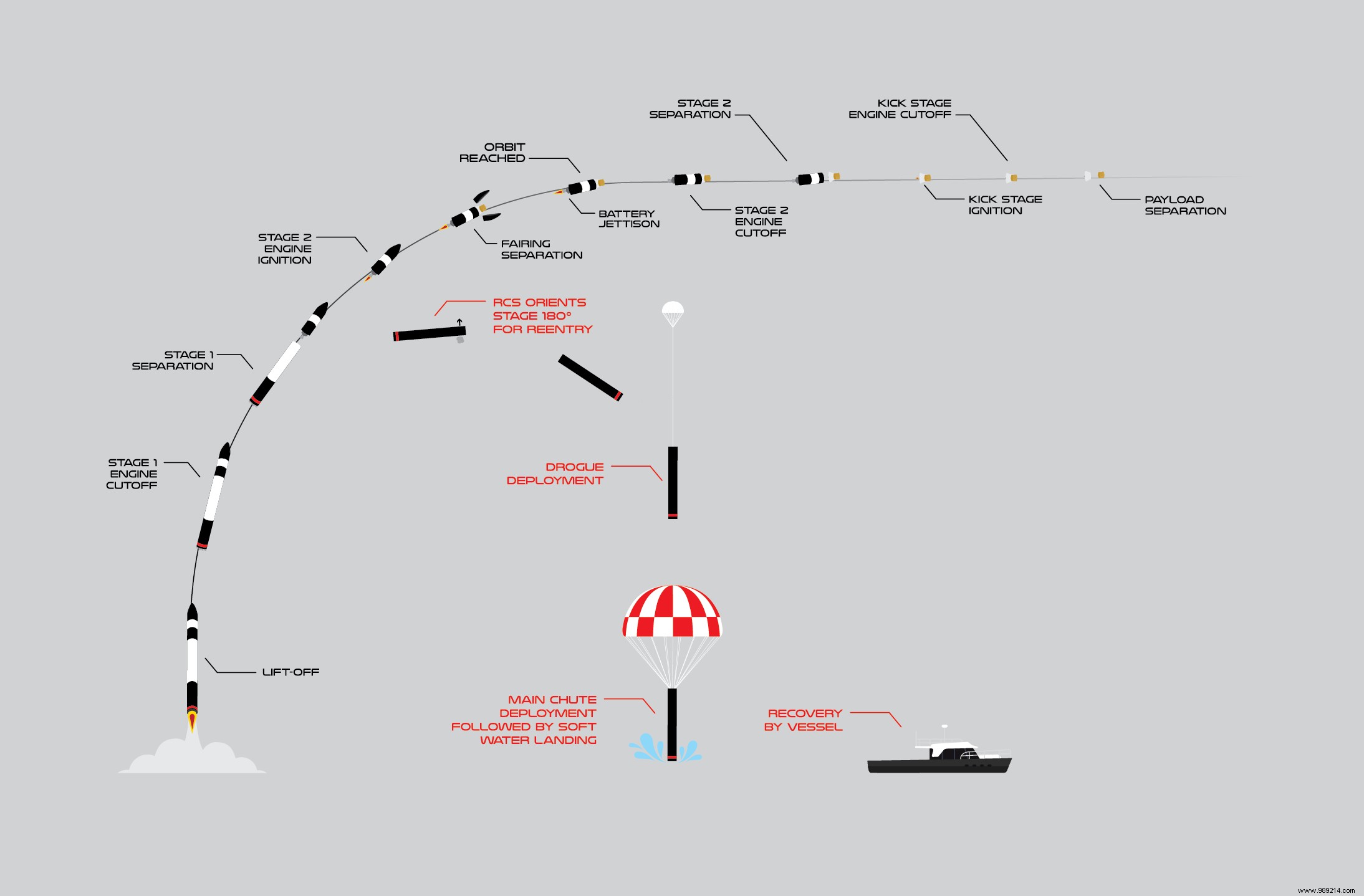The company Rocket Lab has just reached a major milestone in its history by successfully recovering the first stage of its Electron rocket. The booster will be repatriated to a factory to be analyzed.
Since 2015, SpaceX has been revolutionizing the aerospace market by lowering the price of orbiting through the reuse of its rocket boosters. Naturally, other public and private agencies have since tried to develop similar structures. Rocket Lab, a young private company specializing in sending small payloads, is one of them. There are indeed now so many requests for these types of launches that the company has been considering for some years different methods to recover the first stages of its rockets, with the aim of being able to keep pace .
Note that the Electron rocket is too small (18 meters) to perform SpaceX-style powered touchdowns (not enough fuel available). Also, Rocket Lab engineers finally developed the following plan:the first stage separates from the second at about 80 km altitude. Thrusters then make it possible to reorient its "engine part" upside down. Rocket Lab then plans to deploy a first small parachute, then a second (main), in order to slow down the structure.
Eventually, it is then planned to "catch" these boosters directly in flight by a helicopter before they plunged into the ocean. The goal:to minimize the potential damage inflicted by seawater on structures. For now, the helicopter part is not yet ready. Nevertheless, Rocket Lab has just reached another major milestone.
As part of its latest mission, an Electron lifted off from the company's launch site in New Zealand overnight from Thursday to Friday, carrying thirty satellites into Earth orbit . The first stage then descended to Earth before plunging into the open Pacific, approximately 650 kilometers New Zealand coasts. It was then recovered by a dedicated vessel, before being repatriated for analysis.
“Once in the factory, it will be like a CSI [crime scene investigation]” , said Peter Beck, founder and CEO of Rocket Lab. “We will take everything apart and explore the performance of each component” .

For their part, all satellites have been deployed successfully at 500 km above the Earth about an hour after takeoff. Among them are two "cubsats" from the French company Unseenlabs, which specializes in intercepting radio frequency signals from space. These are the second and third members of the future constellation of twenty satellites proposed by the company. Once in place, these instruments will allow better monitoring of activities at sea, such as illegal fishing and anti-environmental behavior.
As you can see below, a fifteen centimeter tall titanium garden gnome, nicknamed Gnome Chompski, was also attached to the Kick Stage of the Electron rocket, a circular platform that deposits satellites in orbit and then falls back to Earth. A nod to the Half-Life video game series, for those who know.